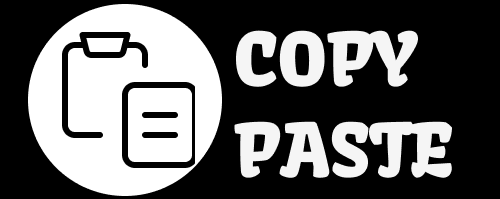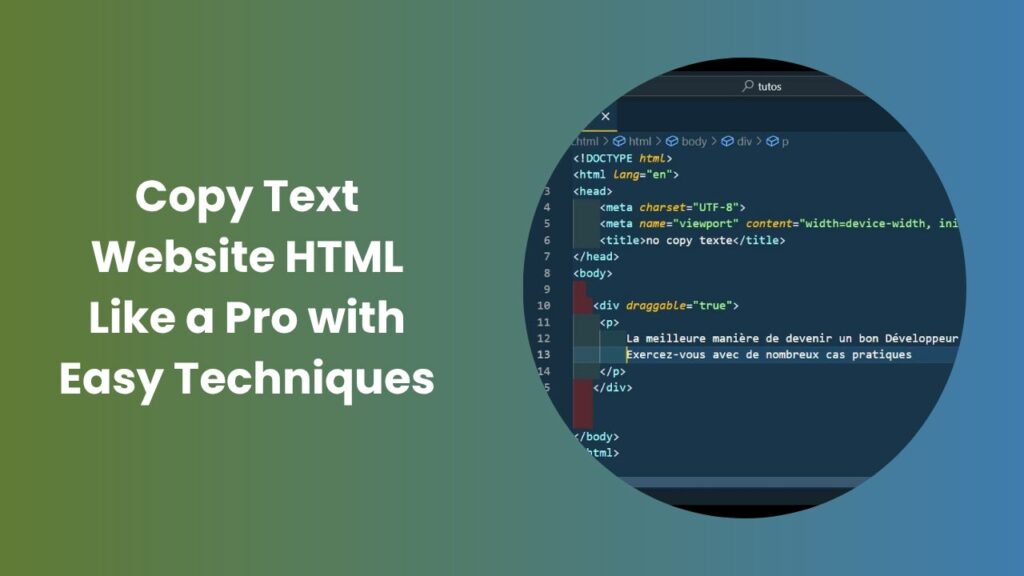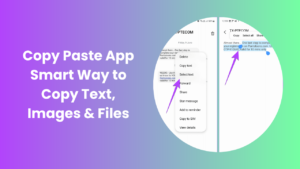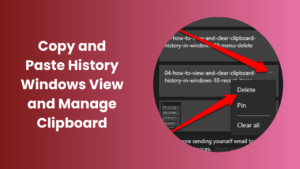Key Takeaways
- Copying HTML from websites is a useful method for learning, prototyping, or offline reference.
- Browser Developer Tools or View Source allow precise copying of HTML without extra clutter.
- Clean copied HTML by removing unnecessary scripts, ads, and inline styles for maintainable code.
- Transform non-semantic elements into semantic HTML to improve accessibility and SEO.
- Update asset paths, optimize CSS, and compress images to enhance page performance.
- Always add unique value to copied content to avoid copyright and duplicate-content issues.
- Test copied and cleaned HTML across devices and browsers for responsiveness, SEO, and accessibility compliance.
Why Copying HTML Matters
Copying HTML from websites is a common technique for developers, designers, and content creators. It allows users to analyze page structure, learn web development practices, and create prototypes quickly. Learning Copy text website HTML helps beginners and professionals alike understand real-world website implementations.
However, blindly copying entire pages without cleaning or optimizing can lead to messy code, broken layouts, SEO issues, and even legal problems. This guide explains how to Copy text website HTML safely, clean it for production, and make it SEO and accessibility friendly.
Methods to Copy HTML Effectively
Using Browser Developer Tools
Using Developer Tools (DevTools) in browsers is one of the most precise ways to copy HTML. You can inspect elements and select exactly what you need.
- OuterHTML: Copies the selected element along with all of its children.
- InnerHTML: Copies only the content inside the element.
Steps to copy HTML:
- Open Developer Tools (F12 or Ctrl+Shift+I).
- Right-click the element and select Inspect Element.
- Right-click the highlighted code → Copy → Copy outerHTML/innerHTML.
- Paste into your code editor for cleaning and adaptation.
This method of Copy text website HTML is ideal for copying sections like forms, tables, articles, or page components without including extra scripts or ads.
View Page Source or Save Page
For full-page copying or raw HTML analysis, View Page Source works effectively. Using Copy text website HTML through this method provides a complete view of the page structure.
- Press Ctrl+U to view the source code.
- Alternatively, Save Page As → Webpage, complete, to download HTML and assets.
Tips for full-page copying:
- Remove tracking scripts, ads, and unnecessary tags.
- Update image, CSS, and JavaScript paths to your environment.
- Test the page locally to ensure proper rendering.
Tools and Extensions
Several tools simplify HTML copying:
- Clipboard extensions preserve HTML formatting when using Copy text website HTML.
- HTML-aware editors like VS Code, Sublime Text, or Atom allow paste-as-HTML features.
- Website downloaders like HTTrack let you save pages offline.
- Online HTML cleaners remove inline styles, scripts, and unused tags for cleaner code.
These tools save time and reduce errors, especially when handling multiple sections or pages using Copy text website HTML.
Cleaning Copied HTML for Production
Removing Unnecessary Code
- Delete scripts, ads, and analytics trackers.
- Remove empty <div> and <span> tags.
- Move inline styles to external CSS files for easier maintenance.
Semantic HTML Conversion
- Replace generic <div> and <span> tags with <header>, <footer>, <article>, <main> and <section>.
- Organize headings properly: <h1> for titles, <h2> for main sections, <h3> for sub-sections.
- Add descriptive alt text for images and meaningful titles for links.
Using Copy text website HTML with semantic conversion ensures content is accessible and optimized for search engines.
Normalizing Asset Paths
- Update images, CSS, and JS paths to your hosting structure.
- Compress assets to improve page speed.
- Test the page across multiple devices and browsers.
Legal and Ethical Guidelines
Copying HTML is safe for learning but requires care when publishing content publicly. Practicing Copy text website HTML responsibly protects you from legal issues.
- Obtain Permission when republishing content.
- Transform Content by adding unique value or rewriting sections.
- Give Credit when possible.
- Avoid Commercial Clones without authorization.
Best Practices for Maintaining Clean HTML Code
When you Copy text website HTML from a website, maintaining clean and organized code is essential. Clean code ensures that your pages load faster, are easier to maintain, and remain SEO-friendly. Start by removing unnecessary scripts, inline styles, and empty tags that do not contribute to the content. Convert generic <div> or <span> tags into semantic HTML elements like <section>, <article>, or <header>.
Always check that your images have descriptive alt text and links are properly titled. By keeping your code structured and optimized, practicing Copy text website HTML ensures your website is both user-friendly and search-engine-friendly.
Applying Copy text website HTML carefully helps avoid cluttered code and improves maintainability. Following best practices when handling copied HTML not only boosts site performance but also prepares your pages for better SEO and accessibility compliance.
How to Use Copied HTML for Learning and Prototyping
Copy text website HTML is a powerful tool for learning web development and prototyping website layouts. By examining the structure of existing websites, you can understand how developers implement CSS, organize content, and create responsive layouts.
For prototyping, you can paste copied HTML into a local development environment and experiment with styling, scripting, and layout changes without affecting a live website. This approach allows you to test new ideas quickly, learn best practices from real examples, and develop your skills in a hands-on way. Practicing Copy text website HTML regularly helps beginners and professionals alike accelerate their learning and improve efficiency.
SEO and Accessibility Considerations
Optimizing copied HTML is crucial for search engines and user experience. Integrating Copy text website HTML with SEO best practices ensures pages rank well and are accessible.
- Replace duplicated text with original content.
- Maintain semantic headings and structured content.
- Add descriptive alt text to images.
- Ensure mobile-friendly and responsive design.
- Optimize meta titles, descriptions, and canonical links.
How to Extract Specific Sections from a Website
Sometimes you only need parts of a page, such as a blog post, table, or form. Copy text website HTML allows selective extraction for prototyping or learning.
Steps to extract sections:
- Open Developer Tools (F12) and locate the section.
- Right-click → Inspect Element to highlight HTML.
- Copy outerHTML for the full section or innerHTML for only the content.
- Paste into an editor and remove unnecessary scripts or inline styles.
- Convert generic <div> tags into semantic HTML like <section> or <article>.
Tools to Simplify HTML Copying and Editing
Several tools help streamline Copy text website HTML:
- Clipboard extensions retain formatting.
- Editors like VS Code or Sublime Text allow clean pasting of HTML.
- Website downloaders allow offline analysis of sections or full pages.
- HTML cleaning tools remove inline scripts, redundant tags, and messy styles.
Common Challenges When Copying HTML
Copying HTML can create issues if not handled carefully. Using Copy text website HTML properly addresses these challenges.
- Broken Layouts: Occurs if CSS or scripts are missing; fix by linking necessary CSS/JS files
- Unwanted Scripts and Ads: Remove inline scripts and ads to avoid conflicts.
- Duplicate IDs: Rename repeated IDs to avoid conflicts in your page.
- Non-Semantic HTML: Convert excessive <div> tags into semantic elements.
- Relative Path Issues: Update image, CSS, and JS paths to match your hosting.
Real-World Workflow Example
Step-by-step for safe reuse using Copy text website HTML:
- Open Developer Tools and select the element.
- Copy outerHTML or innerHTML.
- Remove unnecessary scripts, ads and inline styles.
- Convert non-semantic elements to semantic HTML.
- Replace copied text with unique content.
- Update links, image paths and CSS references.
- Test page responsiveness, accessibility and SEO readiness.
FAQs
Can I reuse HTML for learning purposes?
Yes, it is safe to use Copy text website HTML for personal learning, prototyping, and testing.
What is the safest way to copy HTML?
Browser Developer Tools provide the most precise method to apply Copy text website HTML.
Will formatting remain in Word or Google Docs?
Some editors preserve formatting; HTML-aware editors maintain Copy text website HTML integrity.
Can I clone a website to practice CSS?
Personal practice using Copy text website HTML is fine. Avoid public or commercial use.
How can I make copied HTML SEO-friendly?
Use semantic headings, descriptive alt text, and unique content with Copy text website HTML.
What are common mistakes to avoid?
Avoid copying entire pages without cleaning, neglecting accessibility, and publishing copied HTML without adding value.
Conclusion
Copy text website HTML is a powerful and versatile tool for developers, designers, and content creators. When used correctly, it allows you to quickly analyze page structures, learn from real-world examples, and prototype new designs without starting from scratch. The key to maximizing the benefits of Copy text website HTML lies in combining precision copying with proper cleaning and semantic conversion. This ensures that the HTML you work with is not only functional but also maintainable, accessible, and optimized for search engines.
Using Copy text website HTML responsibly also helps avoid common pitfalls such as broken layouts, duplicate IDs, and non-semantic code. By regularly testing your copied HTML across devices and browsers, you can ensure a consistent user experience, fast loading times, and SEO-friendly pages.





